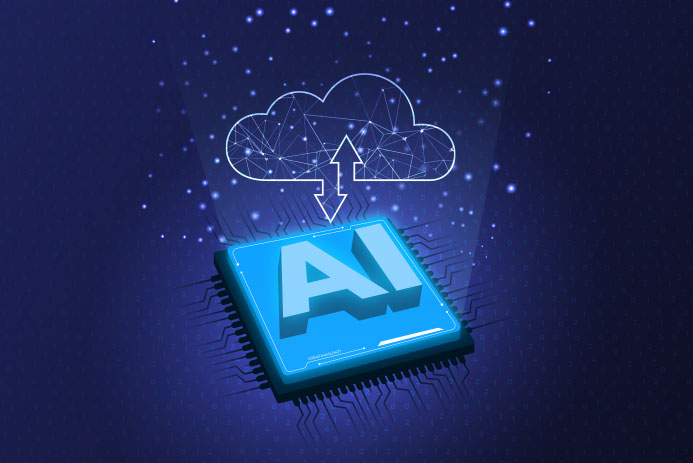Cloud
Nov 13, 2025
Leveraging Hybrid Cloud for AI & High-Performance Workloads
Artificial intelligence and high-performance computing are transforming how the world works. Every company today is becoming a computing company, driven…
Cloud
Published on May 12, 2021

As businesses thrive in today’s highly competitive and continuously evolving marketplace, innovation has become paramount for organisations across the spectrum of industry verticals. Changing customer expectations and the need for delivering top-notch customer experiences mandates organisations to reimagine business processes at every touch point.
Moreover, the Covid-19 pandemic has significantly transformed customer engagement, with digital platforms at the core. This omni-channel digital environment will continue to remain a crucial part of the post pandemic world. As customer interactions move to digital, a vast data pool is created from multiple touch points and at various stages of the customer journey. Future-ready organisations have realised the importance of this data to make informed decisions and enhance customer experience with personalised offerings.
In the backdrop of this disruption, organisations are increasingly looking at leveraging emerging technologies such as Artificial Intelligence (AI), Machine Learning (ML), Data Analytics and Internet of Things (IoT) to take customer experience to the next level. For instance, application of AI-driven analytics is enabling organisations to derive meaningful insights from the data collected through customer engagements on digital platforms, thereby allowing them to better understand customer needs and provide tailored offerings.
Let’s understand how the focus on emerging technologies is impacting cloud adoption.
It’s important to note that innovating with emerging technologies requires an agile, flexible and highly scalable IT infrastructure, especially with the amount of data that is generated. Legacy systems and traditional on-premise IT infrastructure lack scalability, agility and compute power to test and deploy modern use cases around emerging technologies. However, cloud comes to the rescue with its agility, hyper scalability, and compute power, thereby providing a robust infrastructure backbone and enabling IT teams to scale up and scale down as needed, run business applications, and ensure quick roll out.
Future-ready organisations, as part of their digital transformation journeys, have embraced cloud as the core of their IT initiatives. According to a Gartner report by 2024, more than 45% of IT spending on system infrastructure, infrastructure software, application software and business process outsourcing will shift from traditional solutions to cloud.
The report further acknowledges that emerging technologies such as AI, IoT, edge computing and advanced data analytics are seen as the next wave of disruption; and cloud serves as the foundation for these technologies’ use cases for businesses.
These trends clearly indicate that cloud delivers an ideal environment for business applications based on emerging technologies and how a cloud-first strategy is the first step towards a digital-centric business model.
Let’s look at how these emerging technologies will shape cloud adoption trends.
In a post-Pandemic world, organisations will continue to innovate as part of their digital transformation roadmap and emerging technologies will continue to define their efforts. In line with this direction, IT leaders will focus on building a cloud infrastructure that equips their business with the tools and capabilities needed to bring the best out of technologies such as AI, ML, 5G, data analytics, and IoT among others.
Another Gartner predicts that the rapid pace of innovation in cloud infrastructure and platform services (CIPS) makes cloud the de facto platform for new digital services and existing traditional workloads alike, which is why 40% or all enterprise workloads will be deployed in CIPS by 2023, up from only 20% in 2020.
As observed above, with more and more workloads moving to cloud platforms and everything transitioning to as-a-service, cloud adoption will be redefined by its capabilities to perform intelligent tasks and serve as a one-stop platform where all technologies connect with each other seamlessly and enable a truly modern digital experience for all stakeholders.

Cloud
Nov 13, 2025
Artificial intelligence and high-performance computing are transforming how the world works. Every company today is becoming a computing company, driven…

Cloud
Nov 07, 2025
The cloud promises agility and scale. But for enterprises, it also brings the hard reality of complex management. From provisioning…

Cloud
Aug 29, 2025
Multi-cloud architecture is no longer an emerging trend; it’s an established reality. Recent industry reports show that nearly 90% of…